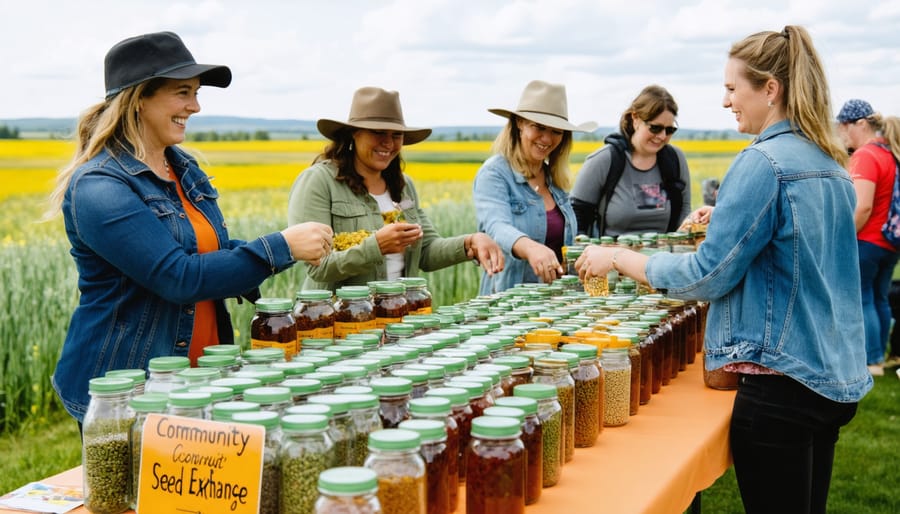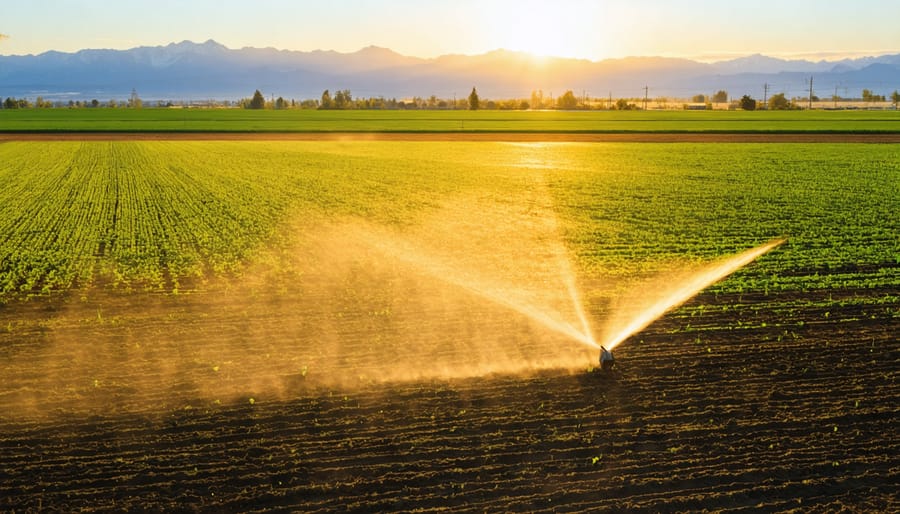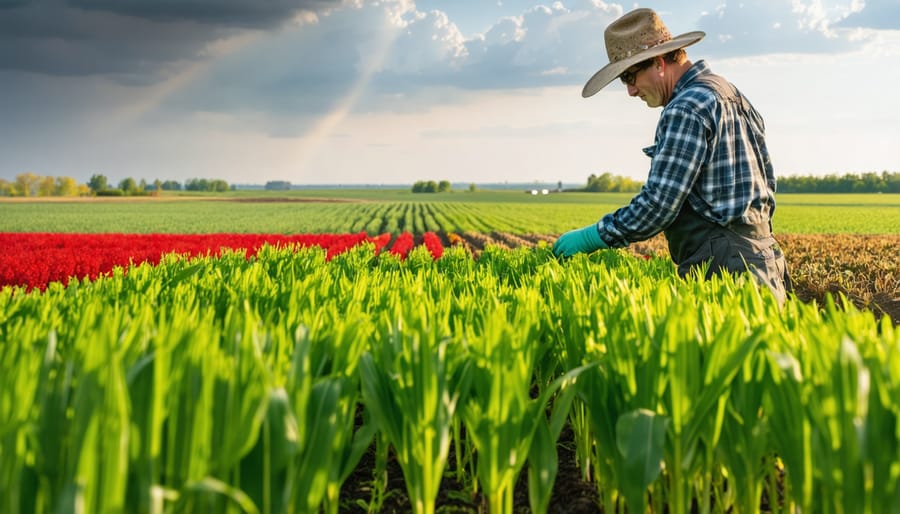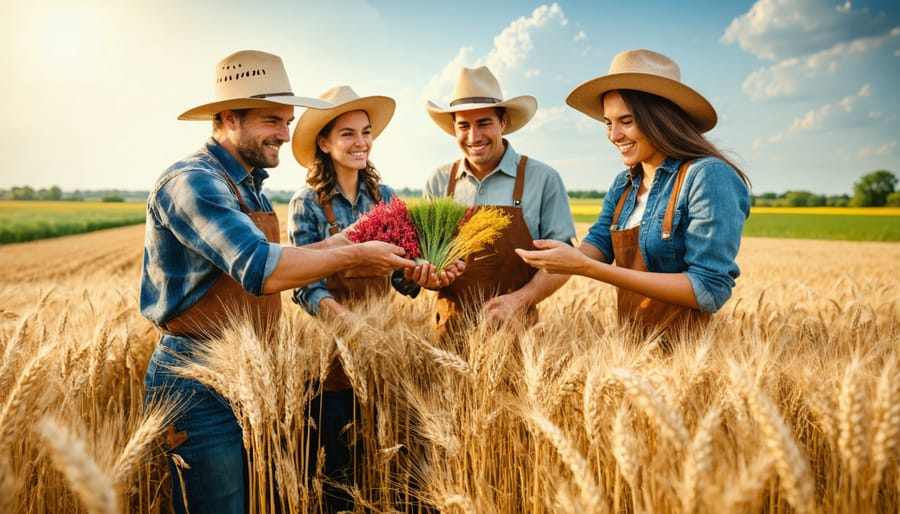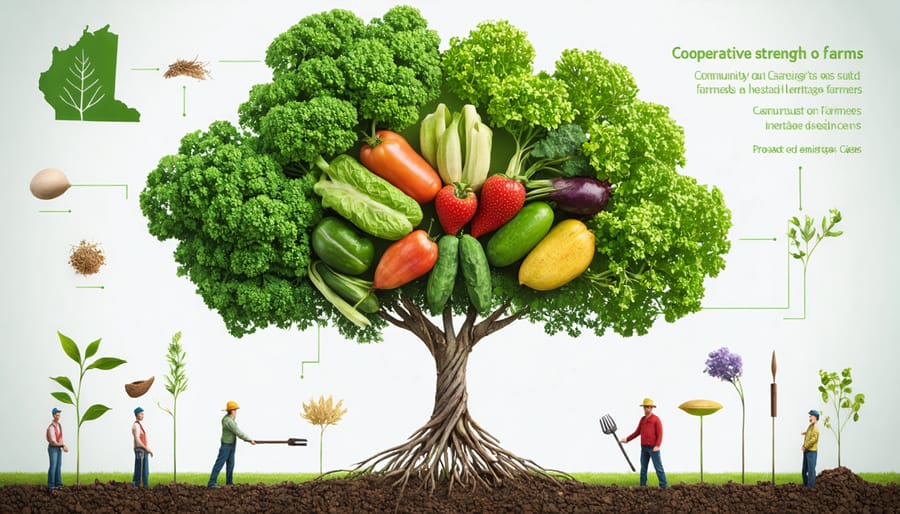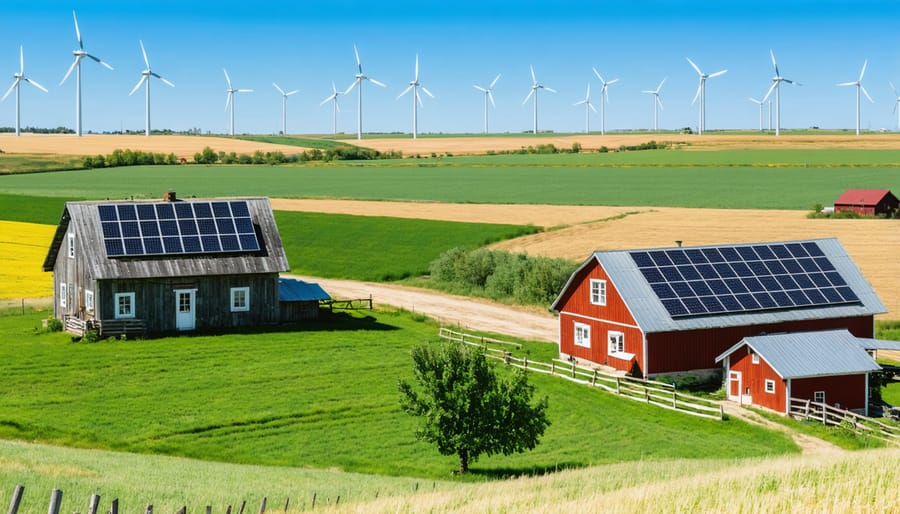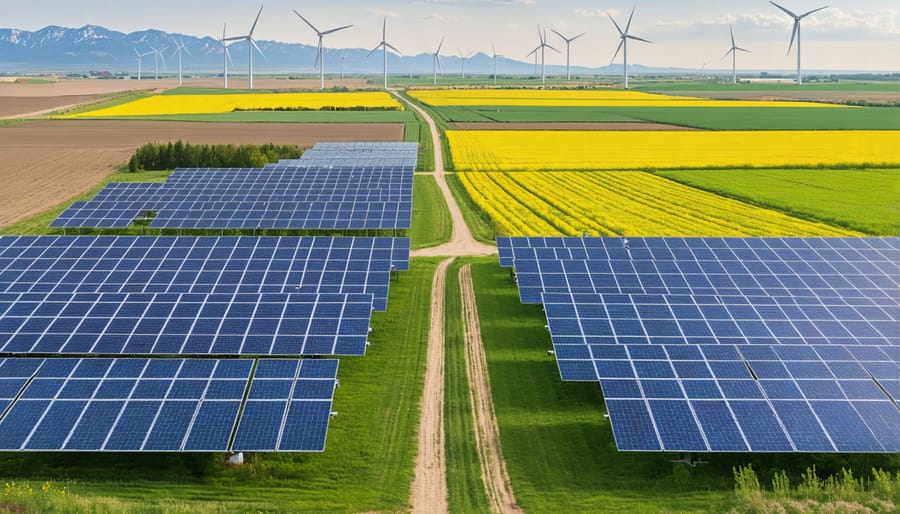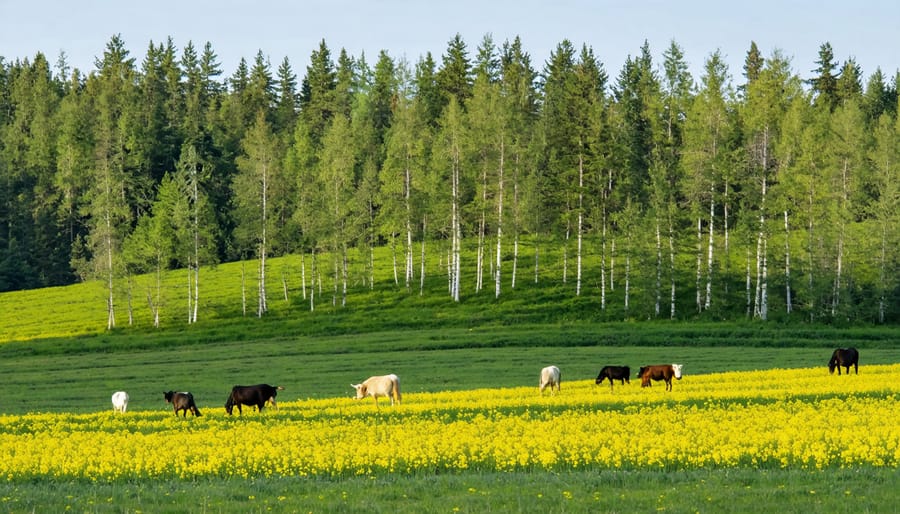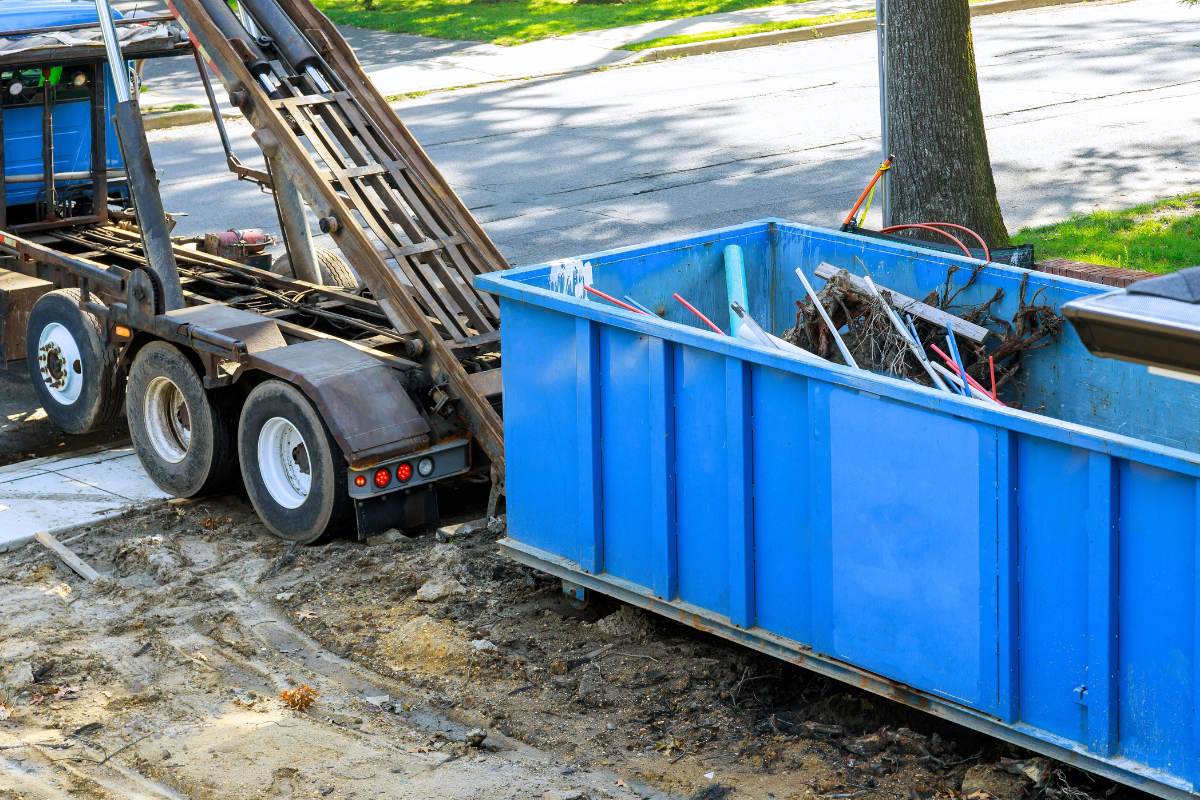Seeds, nature’s remarkable travelers, move across landscapes through three primary dispersal methods that have evolved over millions of years. Wind-carried seeds like dandelions and maple keys sail through prairie air currents, traveling up to several kilometers from their parent plants. Water-dispersed seeds, common in Alberta’s wetland species, float along irrigation channels and natural waterways, establishing new populations along riverbanks and wetland edges. Animal-assisted dispersal, whether through birds consuming Saskatoon berries or burs clinging to cattle coats, creates vital distribution networks across our agricultural lands.
Understanding these dispersal mechanisms helps Canadian farmers work with natural systems, allowing for strategic field planning and more effective weed management. By recognizing how different species spread their seeds, producers can better anticipate plant movement patterns, establish protective windbreaks, and maintain buffer zones around sensitive crops. This knowledge forms the foundation of sustainable agricultural practices that align with both production goals and natural ecosystem processes.
Community Seed Libraries: A Growing Movement in Alberta
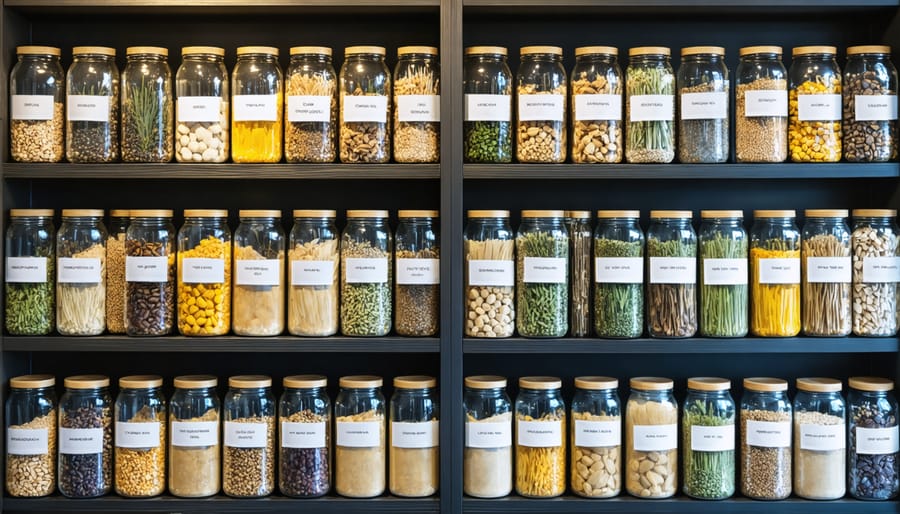
Setting Up Your Community Seed Bank
Starting a community seed bank is a rewarding way to preserve local biodiversity and strengthen agricultural connections. Begin by forming a core group of dedicated volunteers and establishing clear guidelines for seed collection, storage, and sharing. Choose a climate-controlled location, ideally maintaining temperatures between 15-20°C with humidity levels around 30-40%.
Essential supplies include airtight glass jars, silica gel packets for moisture control, and detailed labeling materials. Create a cataloging system that tracks variety names, collection dates, and growing conditions. Consider using spreadsheet software or a dedicated database to manage your inventory effectively.
Partner with local agricultural societies and experienced seed savers to build your initial collection. In Alberta, many successful seed banks have started by focusing on heritage varieties well-suited to our climate zones. Host regular workshops to train community members in proper seed saving techniques and organize seasonal seed swap events.
Remember to maintain detailed records of germination testing and establish quality control measures. Start small with hardy, easy-to-save varieties like peas, beans, and tomatoes before expanding to more challenging crops. Consider implementing a membership system where participants contribute seeds annually to ensure sustainable growth of the collection.
Success Story: The Red Deer Seed Exchange Network
In 2018, a small group of Red Deer farmers launched what would become one of Alberta’s most successful seed exchange networks. Starting with just 15 members, the network has grown to over 300 participants across central Alberta, facilitating the exchange of thousands of locally-adapted seed varieties.
The initiative began when local farmer Sarah Thompson noticed that many of her neighbours were struggling to source reliable seeds suited to the region’s unique growing conditions. She organized monthly meetups at the Red Deer Public Library, where farmers could exchange seeds and share growing tips.
The network now operates through both in-person events and an online platform, where members can catalogue their seed inventory and arrange exchanges. They’ve successfully preserved over 50 heritage varieties specific to central Alberta, including the “Red Deer Gold” tomato and “Prairie Sunrise” wheat.
What sets this network apart is its mentorship program, pairing experienced seed savers with newcomers. The initiative has helped reduce seed costs for participating farmers by an average of 40% while strengthening community bonds and preserving agricultural biodiversity.
Digital Platforms for Seed Exchange
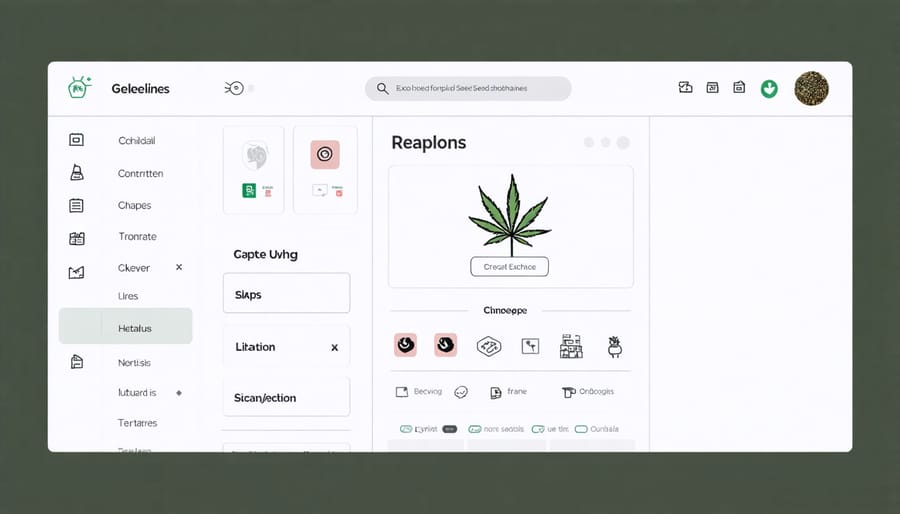
Popular Canadian Seed Exchange Platforms
Several well-established digital platforms make seed exchange accessible across Canada. Seeds of Diversity Canada operates one of the largest networks, connecting thousands of growers nationwide through their Member Seed Directory. For Alberta farmers, the Prairie Heritage Seed Exchange offers regional-specific varieties adapted to local growing conditions.
The emergence of seed co-ops has revolutionized how growers share resources. These platforms typically require a basic membership and follow straightforward protocols for exchanging seeds. To participate effectively, maintain detailed records of your seeds’ origins, growing conditions, and harvest dates.
Popular platforms like Canadian Seed Library and BC Seeds Network feature user-friendly interfaces with search functions to locate specific varieties. Most exchanges operate on a point-based system where members earn credits by sharing seeds and can use these points to acquire others.
Remember to follow platform-specific guidelines for seed cleaning and packaging. Many networks require seeds to be properly labeled with variety name, harvest year, and growing location to maintain quality standards.
Best Practices for Online Seed Trading
When engaging in online seed trading, always start by connecting with reputable seed-sharing communities and established Canadian seed networks. Document your seeds’ origin, variety, and harvest date, and store them properly in paper envelopes or airtight containers in a cool, dry place before shipping. Label everything clearly with both common and scientific names.
For shipping, use bubble mailers or small boxes with adequate padding to prevent damage during transit. Consider seasonal temperatures when sending seeds – avoid extreme cold or heat that could affect viability. Most successful traders include detailed growing instructions and regional considerations specific to Alberta’s climate zones.
Maintain transparent communication with your trading partners about seed quality and germination rates. Take clear photos of your seeds and keep detailed records of previous successful trades. Consider joining local seed-saving groups for mentorship and advice on best practices.
Remember to follow Canadian regulations regarding seed trading, particularly for heritage varieties. Many Alberta farmers have built strong trading networks by starting small and building trust through consistent, honest exchanges. Always sanitize packaging materials and practice proper hand hygiene when handling seeds to prevent contamination.
Farmer-to-Farmer Networks
Building Your Local Seed Network
Building strong resilient seed networks starts right in your own community. Begin by connecting with neighbouring farms through local agricultural associations or your regional farming co-op. In Alberta, many successful networks started with just two or three farmers meeting over coffee to discuss seed varieties that perform well in their specific climate zones.
Create a simple spreadsheet or digital document to track what seeds each member can contribute and what they’re seeking. Schedule regular meetups, perhaps monthly during the off-season, to exchange seeds and share growing experiences. Consider hosting seed cleaning workshops where participants can learn proper techniques while processing their harvests together.
Establish clear guidelines for seed quality and documentation. Each shared variety should come with basic information about its growing conditions, harvest date, and any specific care requirements. Start small with trusted partners and gradually expand your network as you build confidence in the exchange process.
Remember to maintain open communication about successes and challenges. Many Alberta farmers find that these networks become valuable sources of not just seeds, but also knowledge and community support.
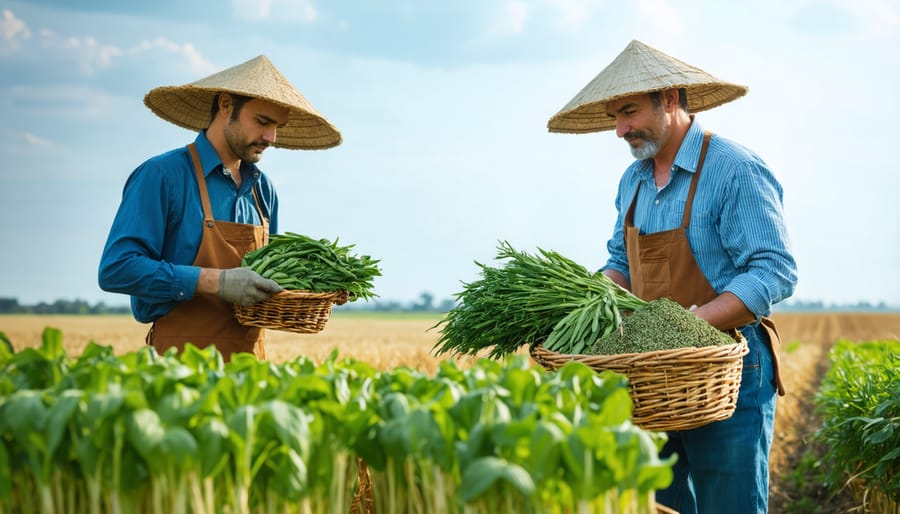
Expert Interview: Alberta Seed Saving Coalition
Sarah Johnson, coordinator of the Alberta Seed Saving Coalition (ASSC), shares insights from their successful community seed preservation network. “We’ve seen remarkable success with farmer-led initiatives, particularly in central Alberta where over 200 farmers actively participate in our seed exchange program,” Johnson explains.
The ASSC’s most effective strategy has been their mentorship program, pairing experienced seed savers with newcomers. “Traditional knowledge combined with modern techniques has proven invaluable,” says Johnson. “Our members have successfully preserved over 50 heritage crop varieties native to the Canadian prairies.”
Coalition member Tom Peterson, a third-generation farmer from Red Deer County, highlights the importance of proper documentation. “We maintain detailed records of each seed’s origin, growing conditions, and harvest dates. This information is crucial for maintaining seed quality and tracking adaptation to our local climate.”
The coalition hosts monthly workshops where members share practical tips and troubleshooting advice. “It’s not just about preserving seeds,” Johnson adds, “it’s about building resilient agricultural communities and maintaining crop diversity for future generations.”
Preserving Heritage Seeds for Future Generations
The rich tapestry of Canada’s agricultural heritage is woven through the seeds passed down through generations of farmers. Today, preserving crop diversity has become more crucial than ever, as climate change and modern farming practices threaten traditional seed varieties.
In Alberta, local seed saving networks have emerged as vital guardians of our agricultural biodiversity. The Prairie Heritage Seed Network, for instance, connects over 200 farmers who collectively maintain more than 1,000 heritage seed varieties adapted to our unique growing conditions. These farmers don’t just preserve seeds; they preserve stories, cultural practices, and centuries of agricultural wisdom.
Community seed banks have become increasingly popular across the province, offering secure storage facilities and organizing seed exchanges that help maintain genetic diversity. The Olds College Heritage Seed Collection showcases how institutional support can bolster these preservation efforts, maintaining over 2,000 locally-adapted varieties.
Digital platforms now complement traditional seed-saving practices, allowing farmers to document their collections, share growing tips, and coordinate exchanges. The Canadian Seed Library, a nationwide database, helps track and preserve rare varieties while connecting seed savers across the country.
To get involved in seed preservation, start by identifying heritage varieties that grow well in your region. Connect with local agricultural societies and seed-saving groups, many of which offer workshops and mentorship programs. Document your growing experiences and share them with the community – this knowledge is as valuable as the seeds themselves.
Consider dedicating a portion of your growing space to seed saving each season. Focus on open-pollinated varieties, which produce seeds that remain true to type. Remember that successful seed preservation is a collaborative effort that strengthens our farming communities while ensuring food security for future generations.
Most importantly, seed saving is about building relationships – between farmers, with the land, and across generations. By participating in these networks, you’re not just preserving seeds; you’re cultivating a more resilient and sustainable agricultural future for Alberta.
The diversity of seed dispersal methods demonstrates nature’s incredible ingenuity in ensuring plant survival and distribution. Whether through wind carrying lightweight seeds across vast prairie landscapes, water moving seeds along Alberta’s river systems, or animals spreading seeds through their natural behaviors, each method plays a vital role in maintaining our agricultural biodiversity.
As members of Canada’s farming community, we have the opportunity to learn from these natural processes and apply them to our own seed-sharing practices. By participating in local seed exchanges, joining regional seed-saving networks, and contributing to community seed banks, we’re not just preserving valuable genetic diversity – we’re strengthening our agricultural resilience and building stronger farming communities.
Consider reaching out to your local agricultural extension office or joining one of Alberta’s many seed-saving groups. Whether you’re an experienced farmer or just starting out, your participation matters. Together, we can ensure that traditional and heritage varieties continue to thrive in our region, making our agricultural systems more sustainable and resilient for future generations.
Remember, every seed shared is a step toward preserving our agricultural heritage and securing our food future.

